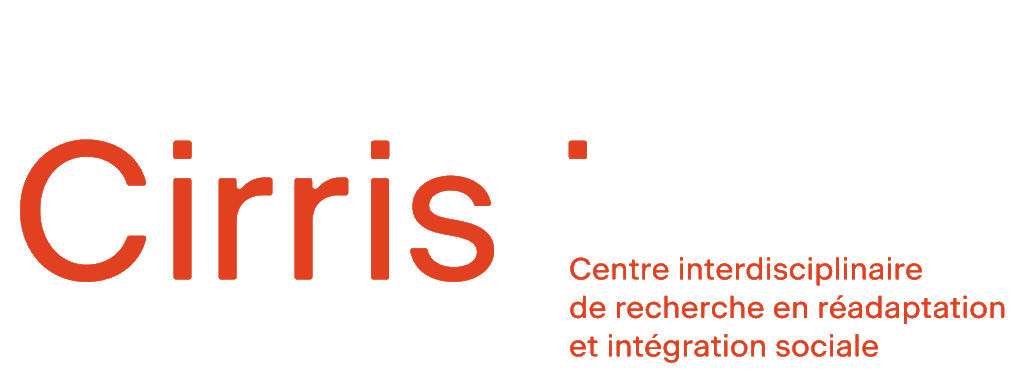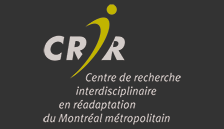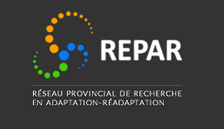What are the main steps of a participatory research project ?
Philippe Archambault, Prof. McGill University and Marc Saint-Onge, coordinator Observatoire québécois du loisir
This capsule describes the structuring of a participatory research project and the management of the different stages associated with it.
Subtitles available
LSQ Version - Quebec sign language
References
Text content
So the question is: what are the major steps in a research project? My name is Philippe Archambault, from McGill University. I am Marc Saint-Onge, from the Observatoire Québécois du Loisir. Every research project begins with an idea, begins with a problem encountered, begins by elaborating a research question. The question in a participatory research project will start, will come from a need of a partner. We will also, in order to make up our minds, look at the scientific literature, we will look at reports published by government agencies, community organizations. So we’ll go around the issue. And with that, we can determine the research question(s). Once we have the question, the second step is to determine where we want to go, what will be the process to follow? what will be the steps to take? This is a part we call methodology. The methodology is divided into different steps. You have to know who your target customers are. We need to know what methodology we are going to use, we will we use surveys or interviews. Will we use different observation mechanisms in the field? Then, we have to think about another, step, which is the interpretation. Data collection and interpretation. How we’re going to analyze our data. And the third will be for all this analysis that may follow. Once you have determined the research question and the methodology to answer it, we obtain what is called a research protocol. Research takes time and effort. And the protocol, it will be used to apply for a grant from an organization. The budgets we get from the grant will be used to pay students, to pay research assistants, and sometimes to pay for equipment, such as computers, recorders, or other more sophisticated equipment. The protocol will also be evaluated by the ethics committee. Ethics is very important. The committee will judge whether the protocol follows all standards. The committee will look at how we recruit Participants. What are the risks for them, what are the benefits. They will also ensure how the project data is maintained. All this is important for confidentiality. What is the expected length of time to make these applications, both for ethics and for the grant? Well, it varies, but let’s say for the grant application we’re talking about about three to six months, once you’ve submitted the project. Then, the time to get news. Then, of course, it’s not always positive. Quite often, it’s competitive. So sometimes you get the grant, sometimes you don’t. As far as ethics is concerned, we are talking about three months, once the project has been submitted, to have the answer and then the ethics certificate. Sometimes you can save a little time, because you can apply, for example, to the ethics committee, before you get the news about the grant. This makes it possible to do both in parallel. Some activities may also begin before you hear from either the ethics or the grant. For example, one can start bibliographic or documentary research. We can also, let’s say we have interviews, that we aim to interview for the project, we can start thinking about interviews or survey questions. The next step is the data collection step. This is a very important step, which is very intense, and in which the field partner is often very, very, very helpful. It is a very important link between the research field and the field application. Once you have the research data, you need to analyze it. So, depending on the research question, depending on the type of data, there are several things you can do as an analysis. It can be tables that represent data, graphs. We will be able to do statistical analysis to compare the results. When we have data from interviews or surveys, we often transcribe the interviews and then look at at the statements made by the various Participants and try to identify the various themes, and major findings that emerge from all this data. There is a lot of interpretation work to be done, so we can have a lot of data. We will try to put them together to find interpretations. Sometimes we will have clear answers, sometimes not so clear, we may have contradictory data, but what is important is to remain as objective as possible, therefore, to be able to take the data as it is, and find the interpretations, whether we like it or not. When we have all these results, hey have been interpreted, we have worked all this out, we don’t want it to remain on a shelf. It becomes important to do information dissemination. There are different mechanisms: for the researcher, it will be more of a scientific article; it will be the presentation of a colloquium; it will be the writing of a report that will be submitted. And for the partners in the field, it is an opportunity to disseminate internally to the decision-makers in their organization, to their partners, all over. And we’re going to use different mechanisms, including Facebook and everything that has to do with social media and such. We want the project and the results to be of use to as many people as possible. In participatory research, we want to go as far as possible with the results we have obtained. This means being able to propose concrete solutions in the short and medium term. Also, the project can lead to other questions, other interrogations. So, from the first project, others can be developed. From the results, it can lead us to other avenues that we can choose to explore or not. And here is a complete research project. Thank you Philippe! Thank you!




